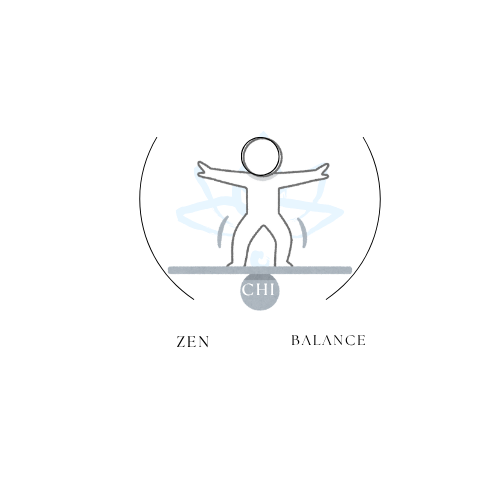
Daily Systems That Make Transformation Feel Effortless
Share
Updated on: 2025-10-21
Table of Contents
- Transformation in Context: Why It Matters for Every Business
- The Difference Between Transformation, Metamorphosis, and Conversion
- The Role of Change Management in Organizational Transformation
- Product Spotlight: A Transformation Roadmap Template for Balanced Change
- Step-by-Step How-To: Build a Digital Transformation Roadmap for Small Businesses
- Personal Experience: A Gentle Transformation That Stuck
- Summary & Recommendations for Sustainable Transformation
- Q&A: Practical Answers on Transformation, Conversion, and Change Management
- What is digital transformation and why is it important?
- How do you create an effective transformation strategy for a company?
- How should teams measure conversion and adoption during transformation?
Transformation in Context: Why It Matters for Every Business
Transformation is the thoughtful shift from where you are to where you need to be. In a business setting, it often shows up as digital transformation, organizational realignment, process upgrades, or improvements that turn ideas into outcomes. Early clarity matters. Within the first steps, it is helpful to define your aim, acknowledge the necessary metamorphosis your operations must undergo, and set a kind tone for the human side of change. When teams understand the purpose, the path, and how conversion from old methods to new will work, they engage with greater confidence.
Digital transformation is not only a technology project. It is a people-centered program that touches processes, customer experiences, data, and culture. It also requires steady change management to ensure everyone has the time, tools, and support they need. This article offers a simple approach that keeps momentum without forcing pace. It may serve small businesses well, yet it also scales for larger organizations.
The Difference Between Transformation, Metamorphosis, and Conversion
These three words often overlap, but they do different jobs in planning:
- Transformation: The overall, intentional journey from a current state to a stronger future state—strategic, structural, and cultural.
- Metamorphosis: The deep internal shift that enables new capabilities—mindsets, skills, and processes evolving to match new goals.
- Conversion: The moment a change becomes real in practice—adoption of a tool, a workflow going live, or a customer action completing a desired path.
Together, they describe the arc: transformation as the plan, metamorphosis as the inner shift, and conversion as visible proof that change is working.
The Role of Change Management in Organizational Transformation
Change management creates safety and structure around a challenging journey. It helps leaders communicate the “why,” sequence milestones, and support teams with training and feedback loops. As you consider organizational transformation best practices, a calm rhythm is important: define outcomes, share context, build champions, and provide ongoing reinforcement. When people feel heard and prepared, adoption increases and friction declines.
Product Spotlight: A Transformation Roadmap Template for Balanced Change
It can be helpful to use a simple transformation roadmap template that fits on one page and guides teams from idea to implementation. A balanced template usually includes a clear outcome statement, a short list of success metrics, initiative themes, a time-phased plan, owners, risks, and dependencies. The benefit is clarity. It reduces confusion, keeps stakeholders aligned, and turns a long plan into a view everyone can understand at a glance.
Key benefits you may appreciate:
- Focus: A single page keeps the vision and priorities visible for every stakeholder.
- Momentum: Sequenced milestones reduce overload and create smooth handoffs.
- Transparency: Owners, timelines, and risks are easy to track and discuss.
- Adaptability: As you learn, you can adjust plans while preserving goals.
If you would like to read more practical guidance and see related resources, the Blog offers simple, evergreen insights. You can also learn more about our approach on the About page, or return to the Home page to explore further.
Step-by-Step How-To: Build a Digital Transformation Roadmap for Small Businesses
This step-by-step method offers a digital transformation roadmap for small businesses that prefer clarity over complexity. It is designed to be humane, practical, and easy to adapt. You can apply it in larger organizations as well, especially when you want a lighter, outcome-first sequence.
-
Define outcomes and boundaries.
Write one to three outcome statements. Keep them short and measurable. For example: “Reduce manual data entry by 60% while improving customer response times.” Note constraints such as budget, timeline, or compliance. This sets a clear frame for transformation and guides trade-offs later.
-
Assess current-state capabilities.
Map your processes, systems, data, and skills. Identify slow points and handoff friction. A simple maturity scale—from “ad hoc” to “optimized”—can help. Invite frontline voices. They will highlight practical realities that leaders may not see.
-
Prioritize a small number of themes.
Cluster opportunities into three to five themes such as “automation,” “customer journey,” or “data quality.” This keeps your roadmap lightweight. Each theme should connect directly to your outcomes, reducing nice-to-have work.
-
Sequence initiatives and milestones.
Lay out a quarter-by-quarter or month-by-month path. Start with foundational enablers like data cleanup or integrations. Then move into customer-facing improvements. List the first two milestones for each initiative so teams know what “starting” looks like.
-
Define success metrics and conversion points.
Set two or three metrics per theme. Include one adoption measure (for example, percent of team using the new tool weekly). Mark conversion points where work shifts from pilot to standard practice. This shows progress and reduces the risk of half-finished change.
-
Design change management plans.
Provide briefing guides, short training, and a way to ask questions. Name change champions in each team. Add quick feedback loops so you can improve communications and adjust timelines kindly if needed.
-
Pilot, learn, and expand.
Run small pilots to test assumptions. Capture lessons in a simple template: what worked, what was hard, and what you will change. Share these notes widely. Early transparency builds trust and stronger adoption.
-
Govern with light but steady routines.
Hold brief, regular check-ins. Review progress against outcomes, not only tasks. Celebrate small wins, and note where support is needed. This steady cadence encourages consistent, humane progress.
-
Stabilize and document.
Once an initiative reaches its conversion point, capture the final workflow, roles, and knowledge base entries. This supports onboarding and reduces drift. It is also a good time to retire outdated practices.
-
Iterate the roadmap.
Every few weeks, refine the plan using new data and feedback. Transformation is dynamic; small adjustments maintain momentum without creating churn.
If you would like a gentle introduction to our philosophy on transformation, you might enjoy reading more on the About page. If questions arise as you plan, you are welcome to reach out through Contact.
Personal Experience: A Gentle Transformation That Stuck
Several years ago, I supported a small team that needed to modernize order management without disrupting daily operations. The group felt cautious. They had tried a large system change before, and it left them exhausted.
We began with a one-page roadmap and chose a narrow pilot that targeted a single bottleneck: manual order confirmations. The team defined a measured goal, selected a simple tool, and set one conversion milestone—send 80% of confirmations automatically, with the same or better accuracy. We focused on kind change management: weekly 15-minute check-ins, short screen-share trainings, and open space for questions. After two weeks, the pilot showed a clear gain. After four weeks, the team exceeded the target and felt ready to expand.
The outcome was practical and calm. The transformation moved forward because it respected pace and people. That experience shaped my view: steady, considerate steps help even complex programs feel manageable.
Summary & Recommendations for Sustainable Transformation
Transformation benefits from clarity, care, and consistency. A simple roadmap, supported by focused themes and light governance, keeps work organized without adding burden. Remember the three layers: transformation as the strategic journey, metamorphosis as the inner capability shift, and conversion as proof that adoption is real.
- Begin with a small set of outcomes. Prioritize initiatives that support them directly.
- Use a one-page transformation roadmap to align stakeholders and reduce confusion.
- Plan change management early. Communication and training are part of the work, not extras.
- Measure adoption and define conversion points to confirm progress.
- Iterate with kindness. Small adjustments can protect energy and sustain momentum.
For more perspective, you can explore the Home page for resources and updates. If you would value a brief conversation about your roadmap, the Contact page is a considerate place to start.
Q&A: Practical Answers on Transformation, Conversion, and Change Management
What is digital transformation and why is it important?
Digital transformation is the coordinated effort to improve how a business works using technology, process design, data, and skills. It is important because it helps teams serve customers with more consistency, reduce manual work, and make better decisions with clearer information. In short, it is a path to resilience, where the organization can adapt with less friction and more confidence.
How do you create an effective transformation strategy for a company?
Start by defining a small set of outcomes tied to customer and team value. Assess your current capabilities with honest input from frontline staff. Choose three to five themes that map to those outcomes, and create a time-phased roadmap with explicit owners and risks. Build change management into every step, and set adoption metrics and conversion points so you know when a change is complete. Keep the strategy living; review it on a regular cadence and update it based on what you learn.
How should teams measure conversion and adoption during transformation?
Select a few measures you can track weekly or monthly without heavy overhead. Examples include percentage of users active in a new tool, time saved on a task, reduction in error rates, or the share of processes completed through the new workflow. Conversion is visible when the new way becomes the preferred way, and when performance and satisfaction hold steady or improve.

I'm a passionate curator at Zen Chi Balance, dedicated to spreading calm, harmony, and mindful living through faith-inspired lifestyle products. I help craft meaningful experiences for our global community of mindful shoppers.
The content in this blog post is intended for general information purposes only. It should not be considered as professional, medical, or legal advice. For specific guidance related to your situation, please consult a qualified professional. The store does not assume responsibility for any decisions made based on this information.
